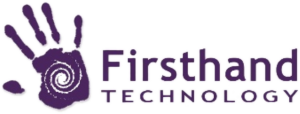Flashback to September 2006 – FirstHand Technologies

When does a young company consider a name change? Why?
When referred to FirstHand Technologies, I learned that a name change had been made recently (“formerly SIPquest”) and felt there may be a story about Positioning strategies, and how they change with market evolution.
FirstHand takes VoIP mobile via OEM channels
Product Line – I spoke with Dave Hattey, President & CEO, and Elyse Familant, Public Relations. Hattey had first heard of SIPquest when he was at 3Com as GM voice business. An active hardware development project to support multimedia was giving him concerns about time to market. By using a software layer from SIPquest, 3Com got all the functionality needed, faster time to market, and eliminated the need for development of new hardware. This was an example of how early markets favour “fully integrated products”, then transition to a value chain favoring “specialist layers” for critical functionality, and evidence that IP telephony markets were going through this transition. This type of market transition is important for strategists to understand, and described very well in Clayton Christensen’s book “The Innovator’s Solution”.
Other market transitions are equally critical, and when Hattey assumed his position at SIPquest in June 2005 he saw a diverse product line, and an evolving market landscape that indicated a need to sharpen and update the business focus.
Category evolution drives Positioning – The company had been founded with technology for the Session Initiation Protocol (SIP) marketplace of Internet telephony devices, but the SIP category adoption was very rapid. The key marketplace event was SIP’s acceptance by Cisco, signaling the maturity of SIP as a technology category. The SIP “quest” was over. Meanwhile, the mobile phone market is mature and very large, but still frothy with innovation, Voice over IP (VoIP) being one of the rising sub-segments. Targeting the intersection of “mobility” with “VoIP” provided a better context for attaining market leadership, with very strong messaging possibilities, both for the marketing efforts and the investor interest in new value creation. Investors, in fact, prefer to find and fund categories, like VoIP, that are in the early stages of Tornado-grade acceptance, in the context of Geoffrey Moore’s “Chasm crossing” model for the technology adoption life cycle.
The resulting positioning decisions are well articulated on their website, with prose such as “FirstHand Technologies is the only Independent Software Vendor that is equipped to provide the mobile VoIP client software for the hand-held devices…. We deliver quality mobile VoIP solutions with time to market advantages.”
Company identity – Hattey engaged a specialist firm who led a brainstorming session that produced 300 potential new names. The short list, of course, had to include only names for which the copyright, trademark, and Internet URLs were available. Then, after picking “FirstHand Technologies” they brainstormed about potential logo designs, and initially had 72 options! Once the choices were made, timing was considered. They decided to time it to synchronize with a $7 million Series C Round in May 2006, using the press attention they were getting from the investment round.
OEM Channel – As the new market strategy evolved, they had to consider developing their own sales channels versus using OEM deals to generate sales. OEMs had already validated the time to market advantages provided by FirstHand, and certainly offered FirstHand the advantages of existing global OEM sales networks. The OEM route was chosen, and FirstHand now has supply agreements with many well known partners.
“Inclusion of our OEM products in solutions by Cisco, Nortel, 3Com and others allow us to create market ‘pull’, and they are very cooperative in joint marketing with FirstHand, even including us in their big marketing programs at events like 3GSM, CTIA, VON and VoiceCon”, comments Hattey. In fact Hattey attended VoiceCon in San Francisco recently and had a full dance card with no FirstHand booth. Now, reports Hattey, the marketing team can focus more on thought leadership – for example speaking at shows and conferences, white papers, and getting articles published. “The last three issues of BCR (Business Communications Review) have contained articles about FirstHand to articulate the need for our technology,” he commented. Also, Hattey writes a monthly column on TMCnet and contributes to CNET to keep the company visibility high.
Brand visibility versus OEM private label – “In an OEM deal your level of visibility has some pros & cons,” comments Hattey. “Having your logo appear in solutions delivered by an OEM customer will create more brand visibility, but may lead to your phone ringing off the line from OEM end customers calling in with support problems, most of which you have no control over.”
As Hattey advised “You want to think hard about the level of Brand visibility you need, and its tradeoffs. It is more important to think about how the OEM is going to promote your technology in their markets, engage you in their marketing, and help you both have a growing and profitable business.”
Marketing & Investment synergies – Marketing strategies must look at outcomes in terms of building a strong business, but must also consider how they will be perceived by potential investors or future M/A opportunities. FirstHand has produced steady growth, now employing about 45 people, with steady growth of investor interest – their three rounds of VC investment total US$17 million. The Series C Round was in May 2006, lead by BDC Capital, and including earlier investors Covington Capital and Skypoint Capital.
This article by Peter Fillmore, was originally published in SCAN – MARKETECH in September 2006.



Follow Us
Follow us on LinkedIn for updates.